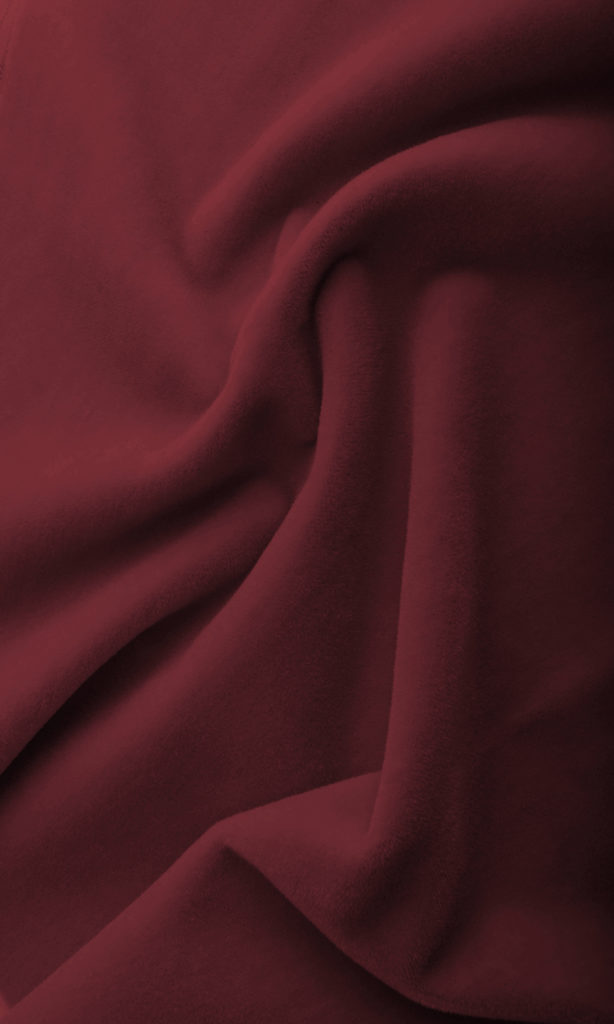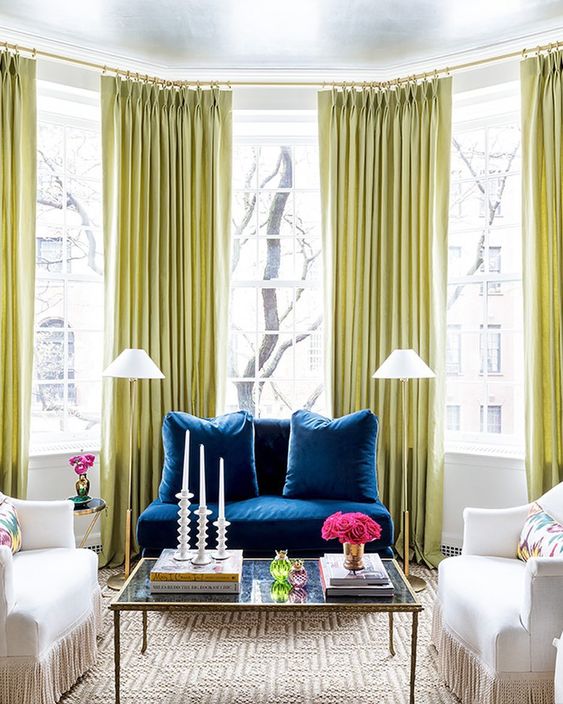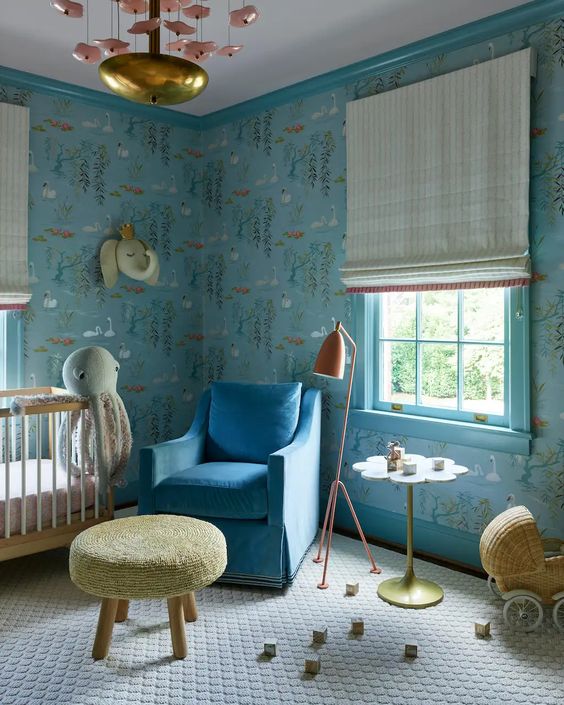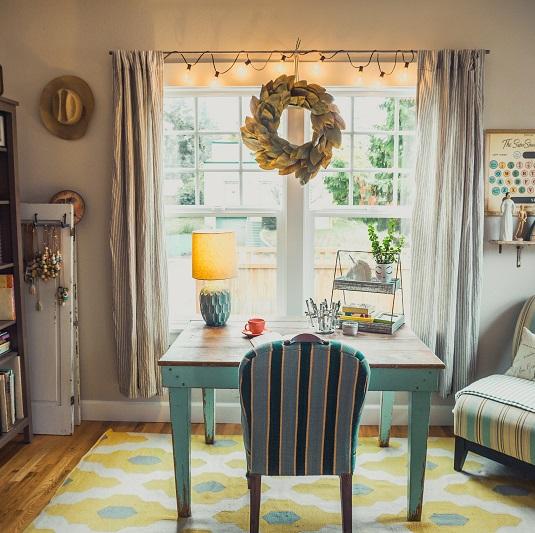Spiffy Speak
HOME THEATER CURTAINS: IDEAS & TIPS
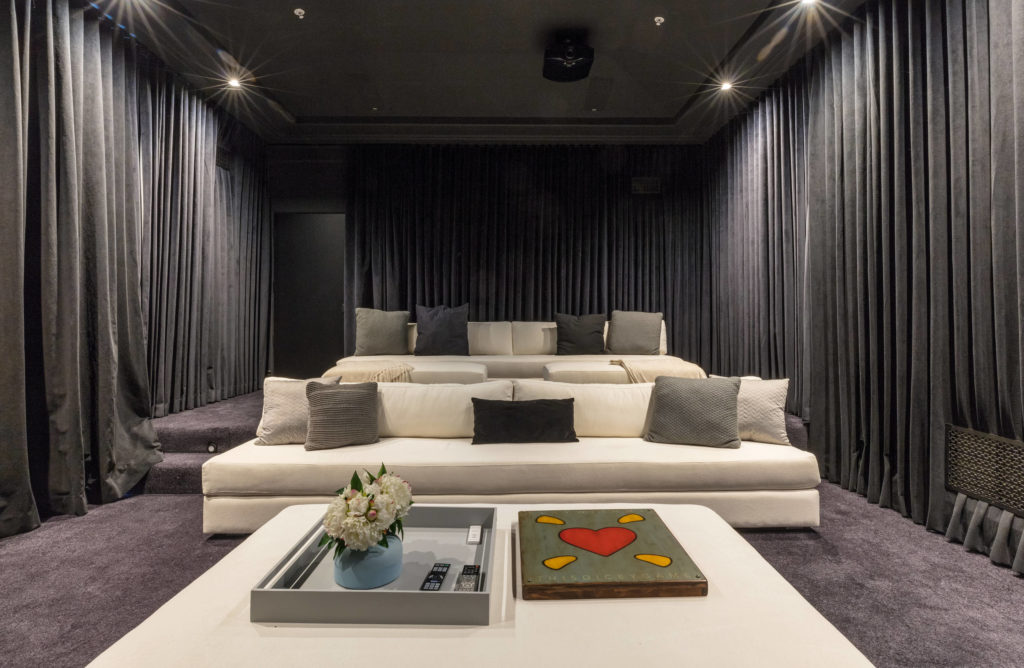
Movie nights are no more a nightlife event, thanks to home theaters. We chill out here with our families, children, and friends watching our favorite movies and shows. If you’re trying to make your home theater look like an authentic one, don’t stop with the giant screen, surround sound speakers and reclining chairs. Get the plush curtains that really make the space look like a theater. Curtains are a key element in creating a cool, dark, regal space that’s perfect for media viewing. In this blog piece, we bring you our top home theater curtains tips & ideas to help you have an immersive media experience!
Order custom curtains and drapes from Spiffy Spools online in any size. Pick from over 3,000 fabrics and patterns!
Curtains that Make the Home Theater
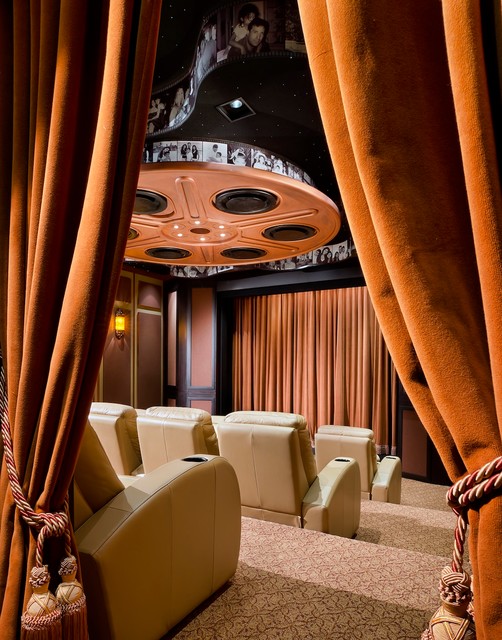
In home theaters, curtains don’t just become decorative accessories, they also have a huge function to deliver. Therefore, there are several factors to consider when buying curtains for your media room.
Home theatre drapes help block out light inflow so that you can see the picture on the screen with all clarity and see nothing other than that. They also absorb the sound amplified by the speakers, canceling echoes and preventing vibrations from escaping from the theater. Besides, they also restrict outside noises from entering the theater. This way, you can focus your attention fully on the show. Home theater curtains shoulder a big share of the acoustic function of the theater along with other soundproofing agents such as cork walls and carpets.
Having understood well the role of curtains in your home theater, let us quickly go through the types of curtains required here and their unique purposes. You may incorporate all of them or a few of them, depending on your aesthetic vision and specific requirements. The following are key curtain placements options in a home theater:
- The Grand Drape: This is the signature piece of cinemas – the sumptuous red velvet drapes that open majestically only at show time. Concealing the screen and all other gadgets behind it, the grand drape creates a sense of mystery that adds to the ambiance.
If you don’t want such a heavy drapery to handle, go for stationary red velvet panels that frame both sides of the screen. These will rest on curtain rods that are placed on either side of the screen. It will seem like fully functional grand drapes that have been drawn open for the show. Only be sure to order your panels with enough fullness and gather so that your curtains fall in loose folds, just like in your local theater.
- Screen cover curtains: Curtains made of thick fabric are placed in front of the screen to protect it from dust. These are opened only when the screen is used. This is nothing but a sleek version of the Grand drape, less sumptuous and less majestic, but fulfilling the purpose.
- Wall curtains: Curtains are used to cover all the walls of the theater for the acoustic benefits. These are stitched from heavy fabrics to maximize the sound absorption.
- Window curtains: These are indispensable because light coming from the windows can cast glares across the screen disrupting the show.
- Door curtains: Curtains are hung at the door not only to block light and sound when they are opened during the show, but also to act as a welcoming feature at the entrance.
Now that you know all the types of curtains that you may need for your home theater, let’s help you with tips to get them done right.
Choose the Right Fabric
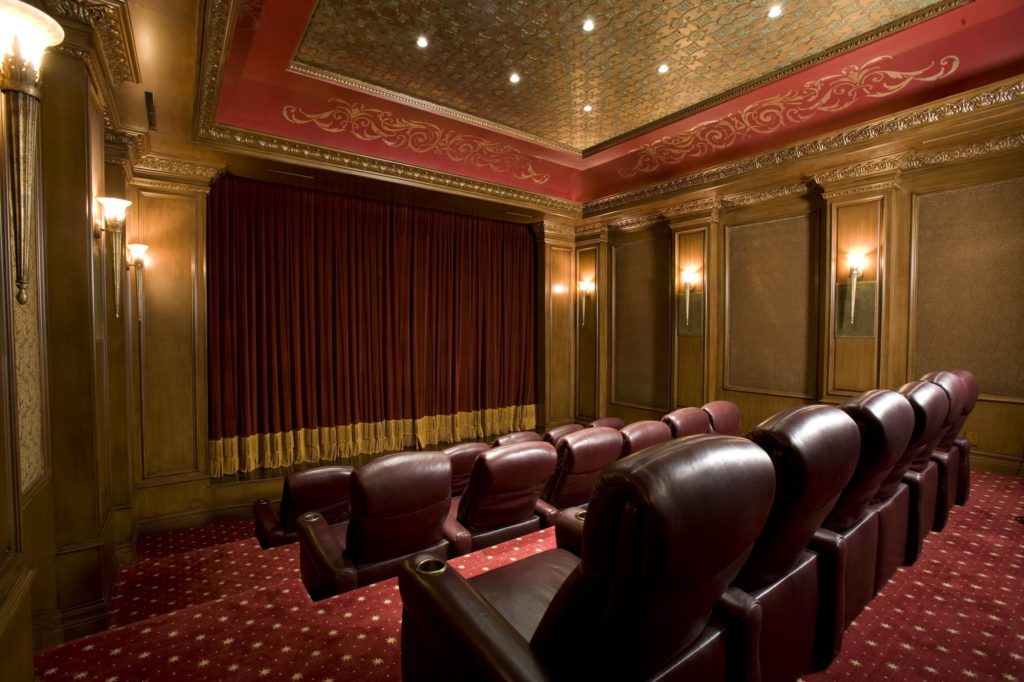
Since the acoustic function of drapes is extremely important in a home theater, curtain fabric selection is the first and most important step to designing home theater curtains.
Red and black velvet curtains have been the staples in theaters both for the drama and the acoustics. Velvet’s plush naps are capable of absorbing sound like no other fabric. Besides, its thick multi- layered weave blocks all incoming light very efficiently.
The other default choice for home theatre curtains are blackout drapes. These fabrics are chemically treated to handle sunlight with extreme competence. They also muffle echos and absorb sounds, canceling exchange of indoor-outdoor noise. Blackout drapes are preferred both for their room darkening and acoustic abilities.
In case you don’t have a dedicated home theater but have an area that works as a media space, both of the above options are workable. And yet, if you don’t want the space to stand out like an exclusive media space, or go for the opulent show of velvet, opt for heavy cotton drapes with blackout lining.
Unless for a decorative purpose as a second layer over the main drapes, avoid sheer drapes by all means. They can neither contain light nor sound and are not suitable for functional use in home theaters at all.
READ MORE: ROOM DARKENING VS BLACKOUT CURTAINS: WHAT’S THE DIFFERENCE?
Go for Theater Ambiance Palette
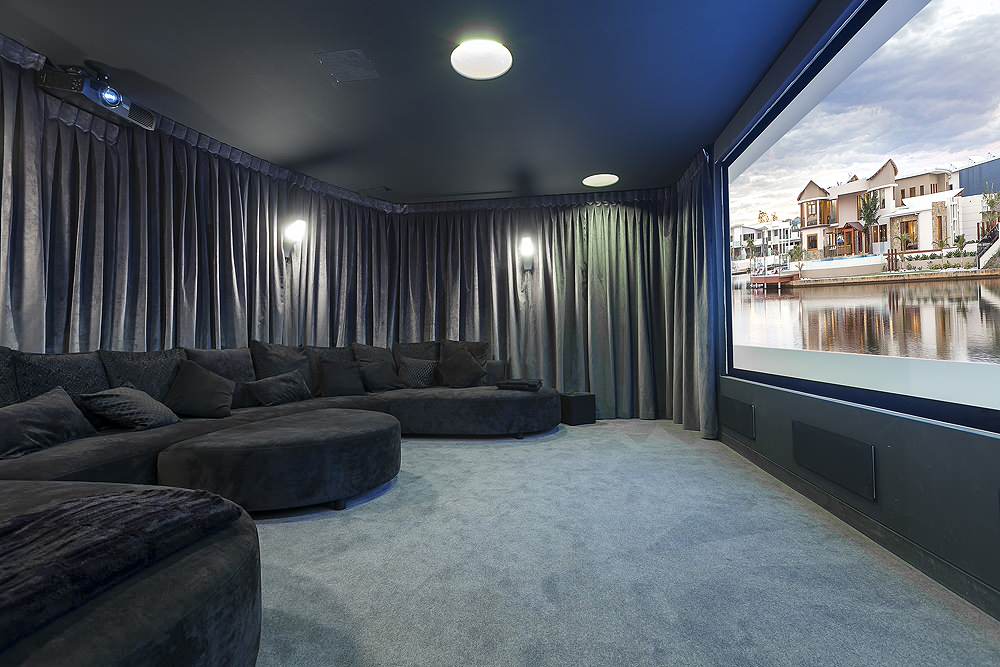
Theaters are cozy dark dens meant to give an intimate enveloping feel as you watch your favorite movie. The darkness around serves to forge a one-to-one relationship between the silver screen and the viewer. If this is the experience you want in your own home theater, pay close attention to the palette of your drapes.
The grand drape is no better done than in red to keep up with the grandiosity of the ambiance. No aesthetic is more fitting for a home theater than the look of red velvet curtains. The fabric and color combination provides a classic, show-stopping effect that indicates the room is meant for movie-viewing. Golden fringe trims complete the red drapes on a regal note and pure theater vibe.
All other drapes that decorate the theater are usually designed in black, brown, gray, or other dark shades for the highest level of light control. In case you lack an exclusively set-apart room for media and need to avoid gloomy tones, go for the next best alternative. Ensure blackout lining though, so that you don’t miss out on the acoustic function too.
As regards the solids versus patterns decision, solid neutral drapes are preferred since they don’t call for attention. In home theaters, curtains are meant to recede into the background, rather than become the feature. Hence, patterned drapes are at best avoided.
Spotlight On: Tanager
Nothing fits the decor of a home theatre as Tanager with its luxurious deep red color. The opulence of velvet adds to the aesthetics of the movies, creating the perfect ambience you need with its blackout and sounproof quality.
Pick Suitable Curtain Style
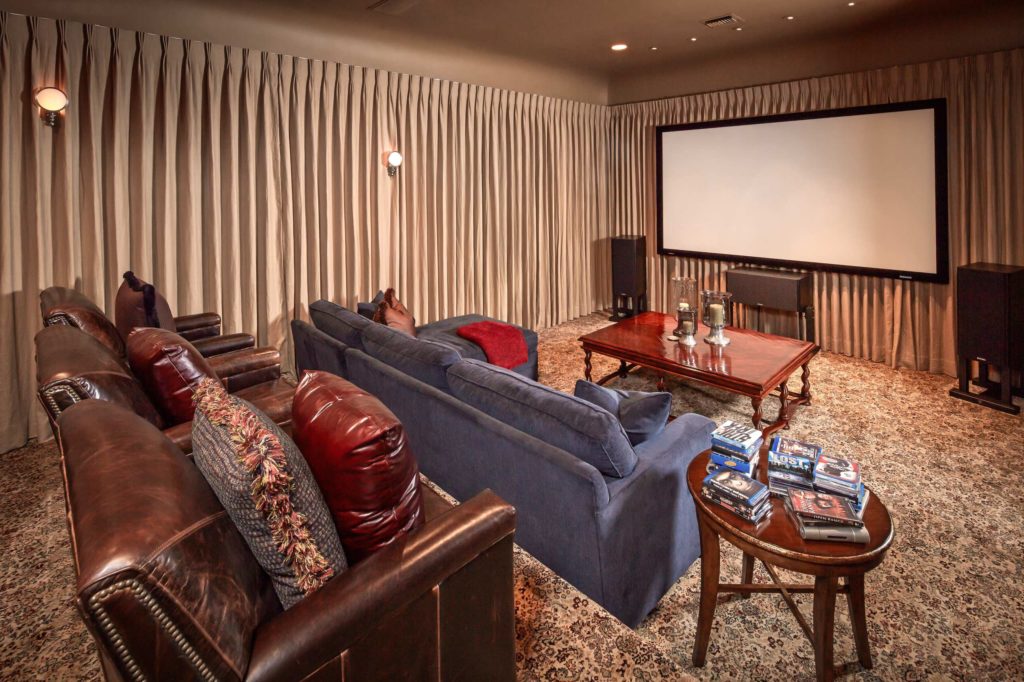
After choosing the best fabrics and palette, if you fail in this step, it will be as bad as spilled milk. Heading styles have a say in the light blocking and acoustic function of the drapery. Besides, they also decide how smoothly the curtains will glide on the pole/track. All of these factors are the parameters for the selection of the curtain heading style.
It’s important to choose a heading style that features no holes, gaps, or looks for light and sound to escape. Pinch pleats, pencil pleats, and box pleats are some examples of curtain styles that don’t feature any holes, loops, or gaps. So no light will come through the top of your curtains.
Another factor to be considered is the mobility of the drapery on the pole. Curtain styles that employ rings are the best for easy movement. These include pinch pleats, flat panel tops, grommet tops, and ripplefolds.
Our top recommendation for home theaters is the pinch pleats curtains because they tick all the boxes. Pinch pleats in all their various subtypes do well in home theaters. They rhyme with the gravitas of the space, leave no gaps for light or sound to escape, and glide smoothly on the pole. There is also an added advantage that pinch pleat drapes usually employ more fabric in the width. That enhanced fullness will guarantee better room darkening and acoustic performance than most other styles.
If pinch pleats seem a bit too formal and dressy for your modern home, you can opt for ripplefolds. With their compact headers, uniform pleats, and easy movement, they are excellent choices for home theaters. Remember, though, that they need special hardware suited specifically to hang ripplefolds. Hence, you need to install them before you order the curtains.
READ MORE: SPIFFY SPOOLS’ CURTAIN HEADINGS STYLE GUIDE
Pay Attention to the Dimensions
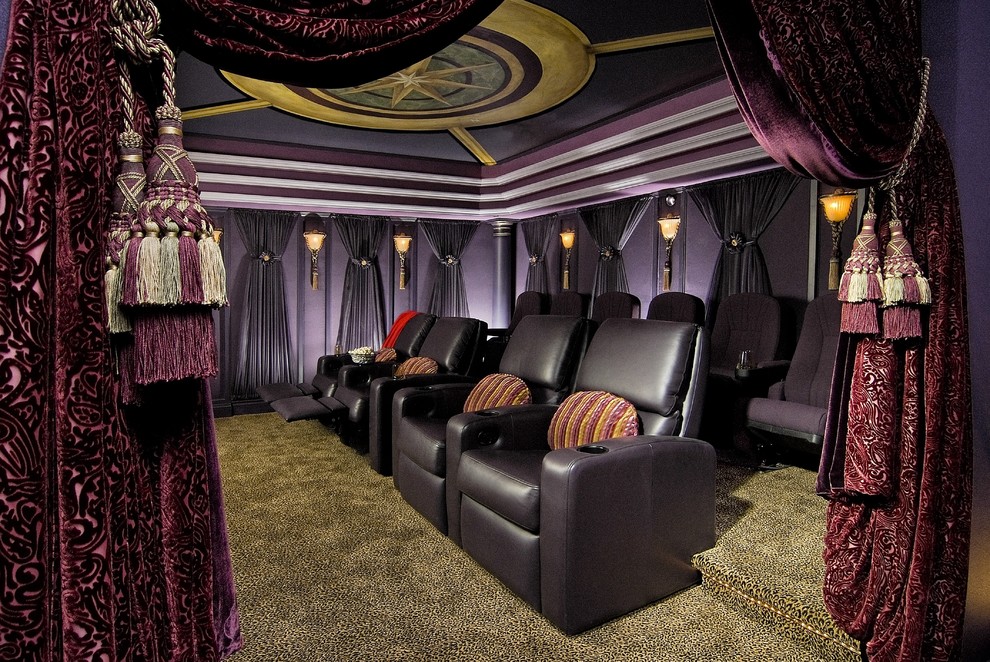
While curtains offer acoustic benefits, they do this good thing with the highest efficiency only when their measurements are done right. Their ability to block light and absorb sound is accentuated by the volume of fabric employed in their construction. The greater the fullness, the better the room-darkening and sound absorption. Hence, take care of the following matters when you take measurements for the curtains.
Width: Make sure that you order curtains that are wide and use a generous amount of fabric width to form dense pleats and gather. If possible, go for 3x fullness for window, wall, and door curtains. This means that for every 1 meter to be covered, the fabric width used to stitch the curtains should be 3 meters. The surplus fabric helps to make sumptuous pleats. The wavy silhouettes thus formed, retract sound waves and the excess fabric absorbs sound effectively. Also remember that if you are shopping for extra wide curtains of over 48 inches, then you can expect your drapery panels to have a vertical joint in them. With ample fullness, the joins and hems in your drapery panels will hide in the pleats. For ensuring the drapes are not overweight, go for multiple panels instead of one sweeping panel. But in case you’re motorizing the curtains, the weight should hardly be a problem.
Length: For best performance, ensure that curtains are floor-length. Avoid puddled drapes though for maximum ease of movement. The drapes should barely graze the floor gently so that no light rays can enter from below the curtains at the doors and entryways.
Position: Hang your rod 8 inches above the window or door frame to prevent light from peeking through the top of your curtains. Or, better still, hang the curtains where the wall meets the ceiling.
Apply the same logic to the horizontal span as well. Extend the rod 10 inches on either side of the frame to eliminate the sun from entering around the sides. The extension also provides room for stacking the curtains when you open them. This way, they will clear the entire window when opened. Remember to account for this excess in the width of the curtain panels when you place the order.
All-round treatment: For best results as regards functionality as well as aesthetics, we would recommend curtains covered seamlessly throughout the vertical space barring the screen. Doors and windows get included in the scheme, but once inside and the curtains are drawn, it will be hard to tell where they are located. It is important to break the panels where doors or windows are located so that access may not be challenged. The home theater looks absolutely ready for its job with such a boundless treatment. Besides, every inch of the wall is covered by thick fabric, ensuring perfect acoustic functionality. Don’t forget to carpet the floors to enhance the aesthetics as well as the acoustics.
Consider the Role of Add-ons
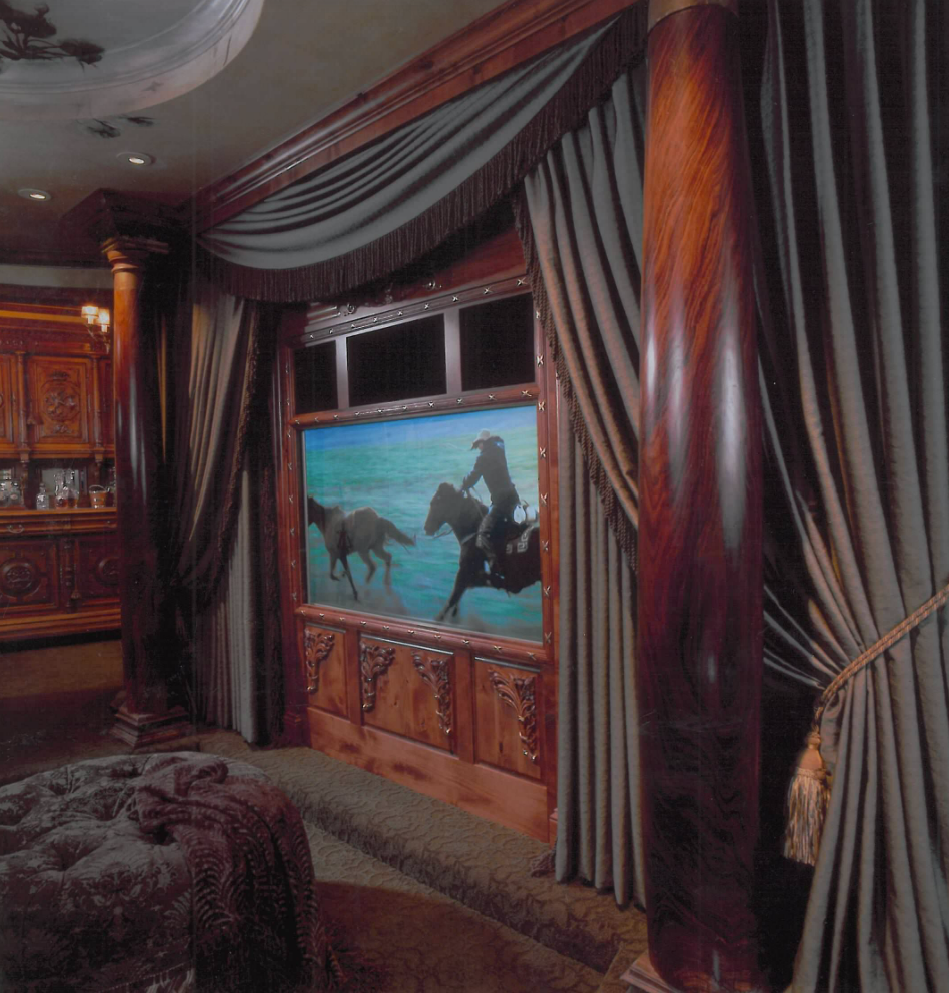
If you can’t get over the traditional movie theater look, we suggest you make the grand drape a feature. Go for the gorgeously pleated red velvet curtains with golden fringe trims that are as regal as dramatic. Gird them with golden ropes and grand-sized tassels to match the look of the drapery.
Not over! Install a board-mounted swag valance in front of the grand drape to garner the real theater-like ambiance. And, as regards the other curtains for the door, windows, and walls, tie a thick gold rope with opulent tassels around the center of the curtain panel.
Make use of the traverse rod and curtain pulley system to open the grand drape, pulling both curtain panels simultaneously away from the center, stacking on the two sides. Just watching this event gives goosebumps, and the mood is made for the show that will follow.
In a modern setup, you can give up the bright palette and go for contemporary styled gray, brown, or black curtains with fabric loops made of the same fabric. Keep them tied up when not in use making a decorative feature of their relaxed look. Or, just leave them as is, sparing their use for rare occasions. Avoid decorating the drapes with trims to keep up the minimalist approach of modern decor styles.
Whether you go for the traditional or the modern style, avoid trimming the drapes’ edges so as not to hinder the continuity if you’re opting for a seamless wall to wall arrangement.
Order Custom Curtains from Spiffy Spools
We hope these home theater curtain ideas help you create the perfect media-viewing space! If you’re ready to dress your room in one of these great looks, Spiffy Spools makes it easy to create custom curtains to your exact specifications. Explore our site to find the perfect options for your home theater in any style—and don’t hesitate to contact us with any questions!

